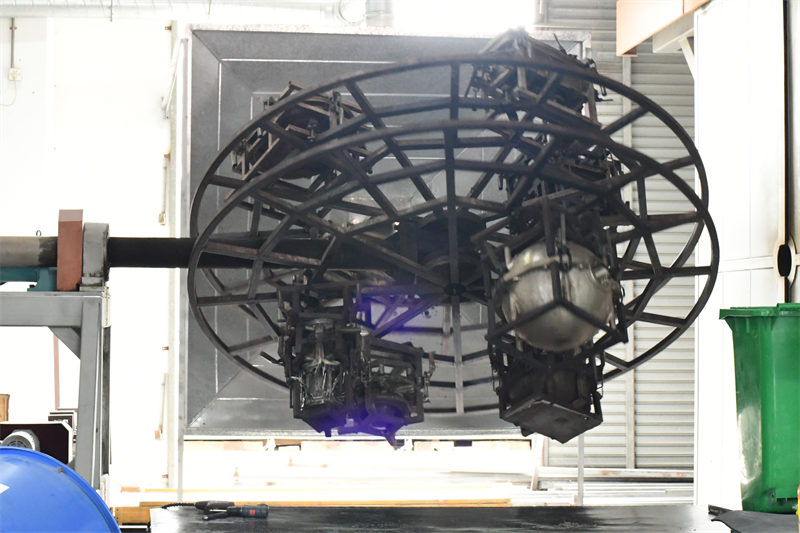How to Optimize Cooling Control in Rotational Molding Process?
 Mar 13,2025
Mar 13,2025

How to Optimize Cooling Control in Rotational Molding Process?
While heating and material distribution often take center stage in rotational molding process, cooling control is equally critical to ensuring product quality, dimensional accuracy, and cycle efficiency. Improper cooling can lead to warping, residual stress, or extended production times. Below are the practical tips for managing cooling in the rotational molding process to achieve high-quality rotomolded products.
Why Cooling Control Matters in Rotational Molding
1. Maintaining Uniform Wall Thickness: During the cooling phase, the plastic material solidifies and takes on the shape of the mold. Controlled cooling ensures that the material cools evenly, preventing warping or deformation and maintaining uniform wall thickness throughout the product.
2. Enhancing Product Strength and Durability: Gradual and uniform cooling allows the plastic to solidify without internal stresses, resulting in a stronger and more durable product.
3. Reducing Cycle Time: Efficient cooling techniques can reduce the overall cycle time of the rotational molding process, increasing production efficiency.

Key Aspects of Cooling Control
1. Cooling Methods
- Air Cooling: This method involves using ambient air or fans to cool the mold. It is simple and cost-effective but may result in longer cooling times.
- Water Cooling: Water can be sprayed or circulated around the mold to accelerate the cooling process. This method provides faster and more uniform cooling but requires additional equipment.
- Combined Air and Water Cooling: A combination of air and water cooling can offer the benefits of both methods, providing efficient and uniform cooling.
2. Cooling Rate
- Slow Cooling: This method allows for better dimensional stability but may increase the cycle time. It is suitable for products that require minimal internal stress.
- Fast Cooling: This method reduces cycle time but can cause internal stresses and warping if not controlled properly.
3. Mold Design
- Even Distribution: The mold design should promote even distribution of the material during the cooling phase. This can be achieved by incorporating flow channels and ensuring proper ventilation.
- Shrinkage Compensation: The mold design should account for material shrinkage to ensure the final product meets the desired dimensions.
4. Monitoring Techniques
- Thermocouples: These devices can be used to monitor the temperature inside the mold, providing real-time data for precise temperature control.
- Infrared Sensors: Infrared sensors can measure surface temperatures, helping to ensure uniform cooling.
- Automated Systems: Automated temperature control systems can provide precise management of the cooling process, reducing the risk of defects.
Practical Tips for Optimizing Cooling Control
1. Use Cooling Jigs: Cooling jigs can help maintain the shape of the product during the cooling phase, preventing warping or deformation.
2. Optimize Ventilation: Enhancing ventilation in the cooling area can improve cooling efficiency and ensure uniform cooling.
3. Maintain a Controlled Environment: A controlled environment can help ensure consistent cooling conditions, reducing the risk of defects.
4. Regular Maintenance: Regular maintenance of cooling equipment, such as fans and water sprays, can help ensure optimal performance.
By optimizing the cooling phase, rotational molding manufacturers can take full advantage of the benefits of the rotational molding process, ensuring that their products meet the highest standards of quality and performance.
 Tel: 0086-13632687993
Tel: 0086-13632687993  Email: roto@lightvenus.com
Email: roto@lightvenus.com

 Home
Home How Complex Plastic Speaker Enclosures Are Made with the Rotomolding Process
How Complex Plastic Speaker Enclosures Are Made with the Rotomolding Process  You May Also Like
You May Also Like



 Tel
Tel
 Email
Email
 Address
Address








